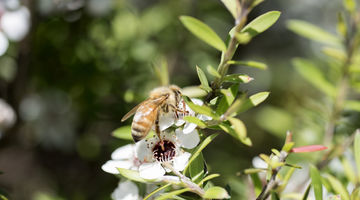What advantage does Mānuka honey have over other honeys?
Transcript
Peter Molan (University of Waikato)
All honey is good at healing, and if it’s for first aid whatever is available will be effective. It’s only when you get an infection well established that you need a strong antibacterial activity. That’s when Mānuka honey is particularly useful.
Scott Coulter (Comvita)
There’s a lot of evidence1 now that Mānuka2 honey is the most important honey, certainly in medical and health applications. Nothing else like it has been found anywhere in the world. The key difference with Mānuka honey is that, not only has it got antibacterial3 activity, but that activity continues once it is applied to a wound.
Peter Molan (University of Waikato)
This unusual antibacterial activity that’s just in Mānuka honey - because we haven’t identified it, we can’t give it a proper name. It’s just referred to as the Unique Mānuka Factor. That’s been shortened to UMF.
In 25 years of work we haven’t yet identified what that molecule4 is. It comes from the Mānuka trees but it’s not hydrogen peroxide. We’ve no idea how it actually works on the bacterial cells. But what we do know is it works on a very wide range of bacteria. There are no antibiotics like that, that work on such a wide range.
It’s [Mānuka honey] killing the bacteria5 like the various antiseptics on the market, but the big difference is it does no harm at all to the body. Whereas, all antiseptics damage the cells in the wound which are needed for re-growing new tissue and new skin. Antiseptics slow the rate of healing. Honey not only is harmless, but it stimulates the growth of the cells which repair the wound.



